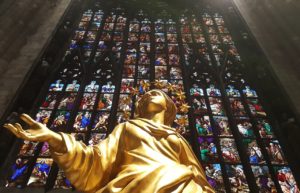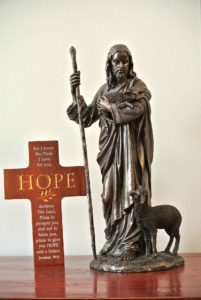The famous reply by the New York Sun to young Virginia confirmed every child’s hopes – that Santa Claus is indeed real.
Children use myriad ways to test their cherished belief in Santa. The logical realise that big fat Santa couldn’t possibly fit down the chimney, or visit everyone in a single night. Others catch on early because older siblings tease them about Santa. Some are sat down at age twelve and solemnly informed of the truth by parents concerned they will blurt out the ludicrous belief at school.
Other kids summon the courage to ask a grownup, knowing that confirmation of their fears will set their belief in a magical Santa firmly in the past. Their initiation brings with it grief for lost certainty. Once Santa is exposed, there can be no more true magic, as the Easter Bunny and the Tooth Fairy fall with him. As if to compensate, a dawning awareness of the significance of giving starts to grow when the magic is blown away.
Most of us as adults don’t believe in the supernatural events in the Christmas story any more than we believe in Santa. The virgin birth, the prophesies, the stable, the singing angels, the wandering star, the three wise men are all viewed by most as nice elements in a fairy tale and promptly cast aside. Although these stories were never meant to be taken literally, churches continue to repeat the story without explanation, making it difficult for people to take the churches’ message seriously.
Theologians such as John Shelby Spong are popularising the idea of considering God in a different way. The God most of us are used to is somewhat temperamental, vacillating between warlord and do-gooder. Nick Cave said it for many in song – ‘I don’t believe in an interventionist God’. But churches lead centuries-old prayer seeking God’s intervention among the nations, the community, the sick, the poor and the dead. Overwhelmingly, God has been portrayed as a magician in the sky, whom we must please in order to access his benevolent side.
Miracles such as healing, producing food for 5,000 people out of a couple of loaves and fishes and walking on water are still presented by churches as literal, or at best explainable, facts.
Spong, however, suggests that if we read the Bible chronologically we realise that the supernatural events and ancient Hebrew symbolism were layered on by writer after writer as the first century wore on. The earliest writings (of Paul) contained no reference to supernatural events or virgin birth. The addition of supernatural events is suggested to be a response to the overwhelming transformation brought about by the adult Jesus. Words failed the writers, who could only resort to over-the-top impressions such as ‘the heavens rejoiced at his birth’.
Spong’s proposals follow the work of theologians such as Robinson, Bonhoeffer, Barth and Tillich. Tillich claimed that God could not be defined personally as a being, but should be considered non-personally as the Ground of All Being.
If Spong is right, what does this mean for people brought up to believe in the miracles, the virgin birth, the resurrection and ascension? The angels, the wise men, the star? Spong’s own grappling with the implications of viewing God differently was ‘both an exhilarating and a fearful experience,’ much like the child who dares to question Santa.
Most of us uncover Santa at an early age, realising the North Pole, the elves, the chimney, the reindeer, and frequent sightings at shopping malls don’t quite match our experience of a physical world. For some children it is an exhilarating initiation, albeit tinged with lament for the beliefs one leaves behind. Yet when the magic is stripped from Santa, the child comes closer to understanding generosity.
When we peel away the magical layers on God, we enter a journey into a deeper discovery of Jesus. This is a more authentic experience that doesn’t contradict what we know, but rather reaffirms what our souls know of the universe.





